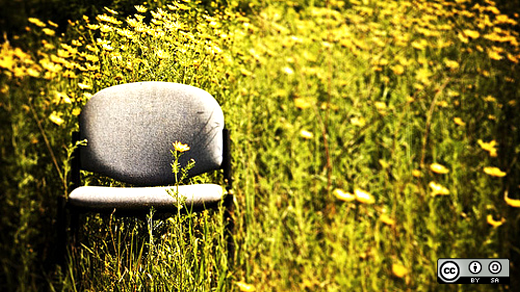A few weeks ago, I read Jim Whitehurst's call to ban the one-hour meeting in the Time article 25 Daily Habits That Will Make You More Successful. Jim recommended making 30 minutes the default meeting length.
I made this change myself last summer, when I saw my calendar filling up with more meetings than I could possibly attend. I host (and am invited to) many meetings, most of which are booked for one hour (or longer). So I began to observe what I could do to ease my busy schedule.
I immediately noticed that no one planned meetings for less than one full hour. On top of that, these meetings included so many people, and I reflected on whether everyone present really needed to attend (but that's another story). The third insight was this: a meeting most often lasts for the entire time it's booked, no matter what. It's a variant of Parkinson's law: a meeting expands so as to fill the time available/scheduled.
So I started trying to run my own meetings in 30 minutes or less. But strong cultural norms often govern meetings, and one of those norms is the hour-long default, which people book "just in case." I also noticed another odd tendency: People arriving at meetings on time, then immediately leaving the room to grab coffee. Add about five or 10 minutes of pre-business small talk when they return, and you already have too little time to tackle the meeting's entire agenda.
After several months of pushing for 30-minute meetings, however, I've come to believe they truly can be done. Here are a few suggestions for reclaiming some of your precious time.
Prep your tech
If you are hosting the meeting, ensure the technology you need is working before the meeting starts. That might be hard if you don't get access to the meeting room until the very last minute, or if your previous meeting ends just as another begins. But too many meetings have started with another five or ten minutes of struggling with a projector and audio/video conferencing equipment.
Trim the guest list
Running short meetings is much easier with fewer participants. Meetings of two or three people are much easier to keep focused and on-time than they would be if eight people were in the room. More people might mean more brains and knowledge, but it also means each discussion can take longer if everyone speaks up.
Appoint a referee
We've all been there: the meeting that never ends. Just when you thought the meeting would end, someone repeats something that's already been said, and the same discussion starts over again, going in circles. I recommend appointing someone to help the meeting stay on track, someone with the courage to stop another round of banter unless some new, interesting insight will emerge.
People fear ending meetings after just a short time. They think, "What have we missed? Did we really discuss the topic thoroughly enough to be able to make the right decision?" My tip here is to actually end the meeting, and if you or other participants later feel a need for additional discussion, then schedule a new, 30-minute, meeting for it.
For some personalities and topics, having several short sessions is actually better than one long session. This way, you get to process the discussion on your own—and maybe generate new insights or issues to raise in the next session, or come to terms with the conclusion at which the group arrived, helping you move on.
Keep it simple
A short agenda is, of course, easier to complete than a long one. Always monitor the desire to break free of the agenda; make note of topics that seem to drain the meeting's time or energy, and break them into a new session at another time. To help keep meetings short, I recommend holding standing meetings (no chairs allowed!). In my workplace, though, this can be difficult; all meeting rooms have chairs, and people tend to sit (or slump) if they're available.
Skip the presentations
If possible, distribute information before the meeting and ask everyone to read and process that material in advance. This makes meetings about discussion rather than presentations. I've even seen people record presentations beforehand, then distribute that presentation to the participants before they arrive (instead of simply sending out the slides or other documents). I haven't tried this yet, but from what I've read, it seems like something I will.
Remember why you're there
The meeting's purpose will influence its time limit, too. A weekly status report meeting in front of a Kanban board, for example, is easier to run in 15-30 minutes than a monthly meeting including a presentation would be. In fact, many agile methods suggest a daily standup meeting that lasts no longer than 15 minutes (but you might just find it harder to book people in weekly 15-minutes meetings than in single monthly one-hour meetings).
Much of what I've discussed here pertains to commonplace meeting habits, rules, customs, and behavior—but that's exactly what I'm trying to help you expose and change. Running shorter meetings is hard. People accustomed to hour-long meetings will probably find 30-minute sessions stressful at first. But as more people notice the benefits of shorter meetings, they'll become easier. Changing a culture is always difficult, and you won't do it over night. But hang in there and start reclaiming the hours in your day—one meeting at a time.






6 Comments